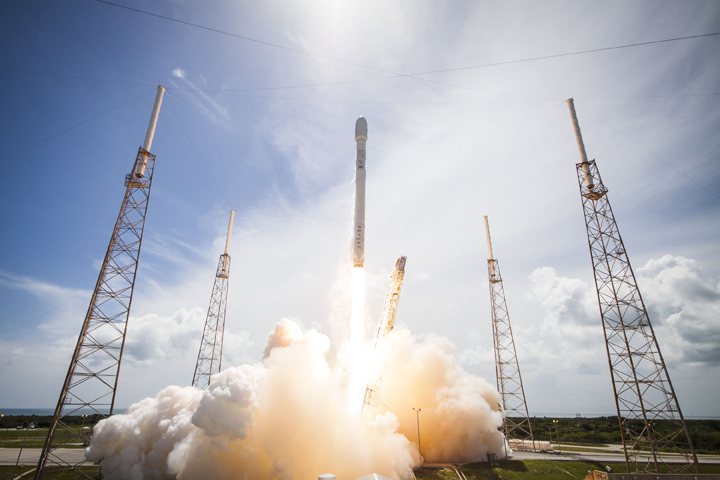TORONTO – Elon Musk’s SpaceX is launching a cargo mission to the International Space Station (ISS) on Friday. While not unusual, what is unusual for this type of mission is that the ambitious company plans to land the first stage of its rocket on a floating ocean platform.

“The odds of success are not great—perhaps 50% at best,” SpaceX said in a news release.
The rocket — at 14 storeys tall — will be travelling at about 1,300 metres per second. Getting it from that speed upwards, and then back to the ground for a stable landing is challenging. And the company knows this well after two failed attempts.
On Sept. 29, 2013, the company unsuccessfully attempted to land the Falcon 9 after delivering Canada’s CASSIOPE space-weather satellite into orbit.
Then, on July 14, 2014, the company attempted it again after successfully delivering six Orbcomm satellites into space. That landing went much better in the sense that it didn’t spin out of control. After it landed, it tipped over as planned, but was lost.
But those have been valuable lessons.
In order to get it back safely, the rocket will go through a series of three burns: first, the boostback to adjust the impact point of the rocket; the second slows it from 1,300 metres per second to 250 metres per second; the final burn slows it to two metres per second as its landing legs deploy.
Even more challenging than just slowing it is landing it on a platform that is just 91 metres by 30 metres — on a bobbing ocean surface.
“During previous attempts, we could only expect a landing accuracy of within 10km. For this attempt, we’re targeting a landing accuracy of within 10 meters,” the company said.
So how do you try to make such a precision landing? By outfitting it with four “hypersonic grid fins.” These fins are placed in an X-wing configuration around the rocket. They are stowed until the final re-entry. Once deployed, they move independent of each other, allowing the rocket to move using yaw, pitch and roll.
Why go to all this trouble?
Musk is a big advocate of making space travel more affordable.
“If one can figure out how to effectively reuse rockets just like airplanes, the cost of access to space will be reduced by as much as a factor of a hundred,” Musk has said. “A fully reusable vehicle has never been done before. That really is the fundamental breakthrough needed to revolutionize access to space.”
The launch was initially scheduled for Dec. 16, however it was moved to Dec. 19 so that the company could “do everything possible on the ground to prepare for a successful launch,” according to a NASA press release.
The rocket is scheduled to launch on Friday at 1:20 p.m. EST from Cape Canaveral, Florida. You can watch it on NASA TV beginning at 12:15.


Comments